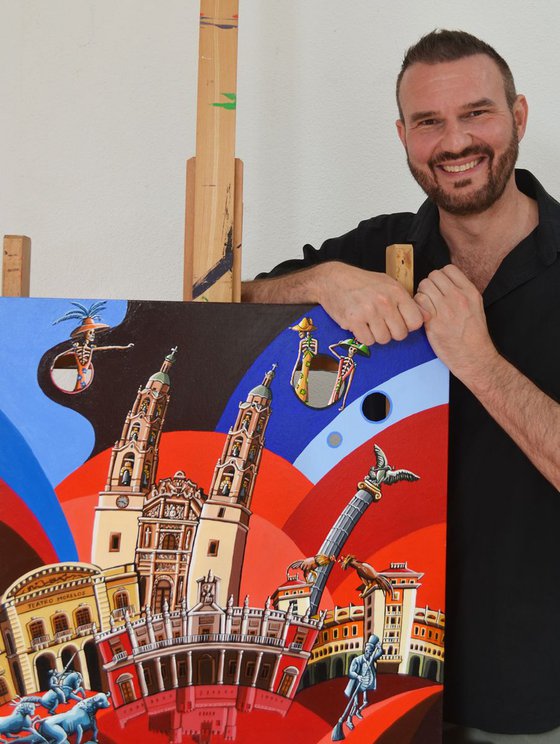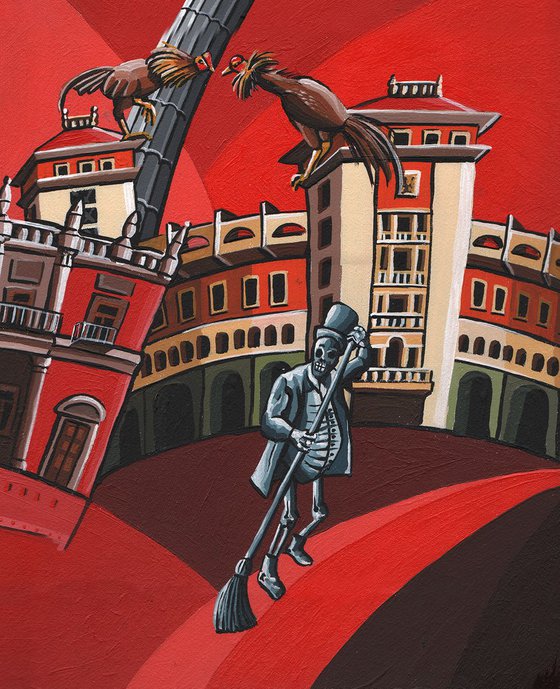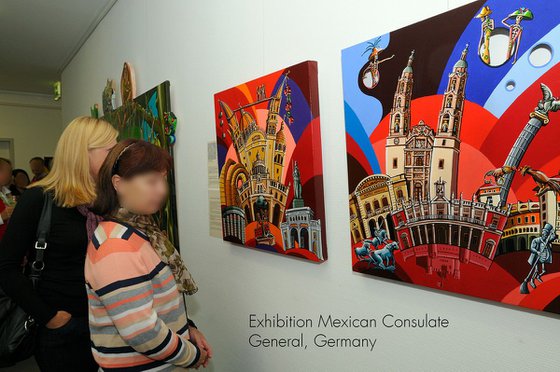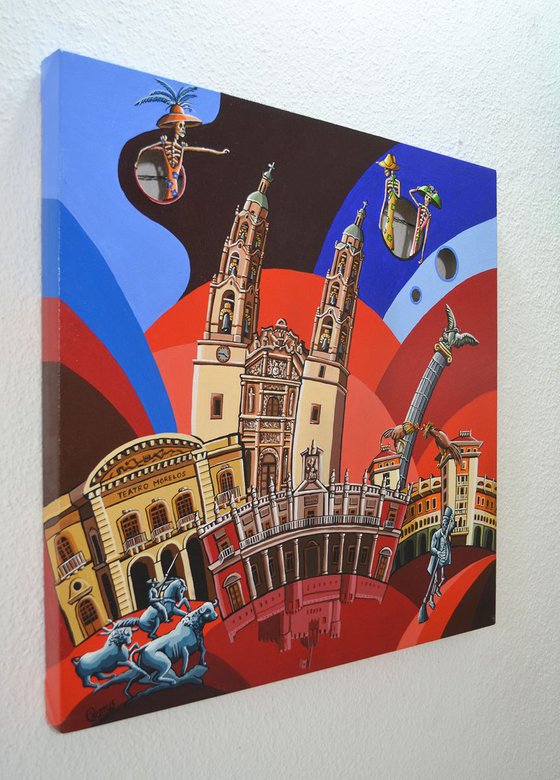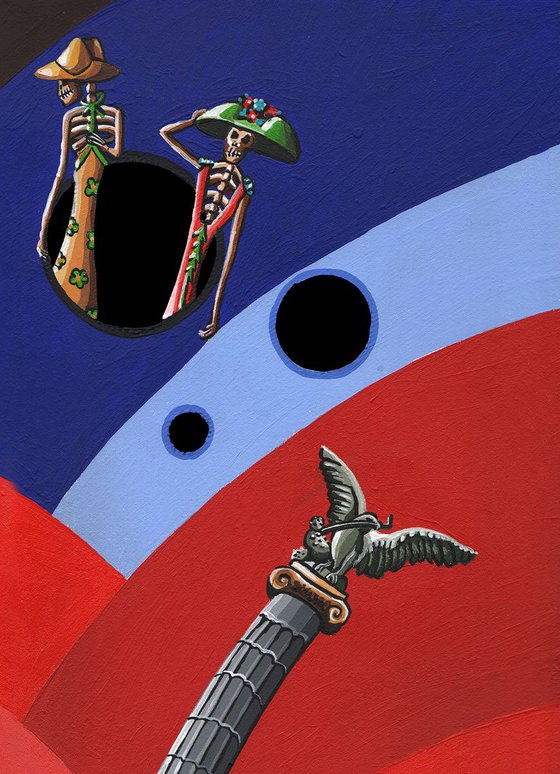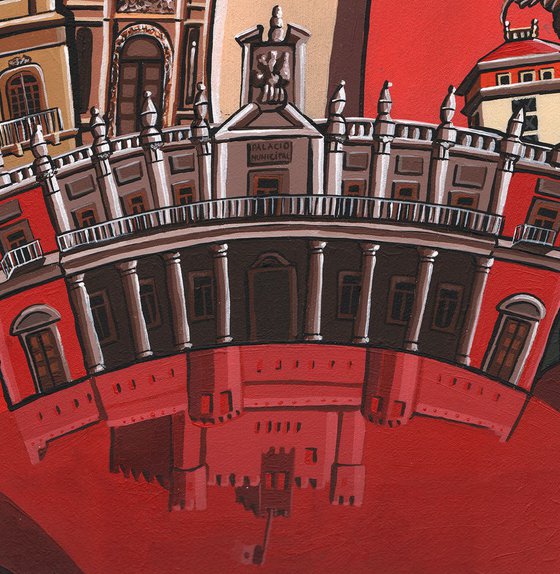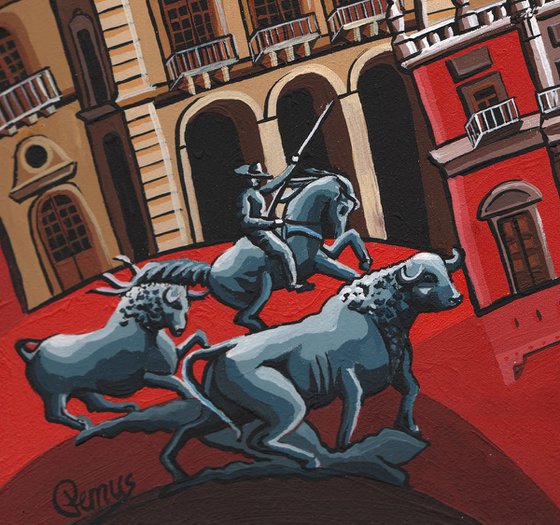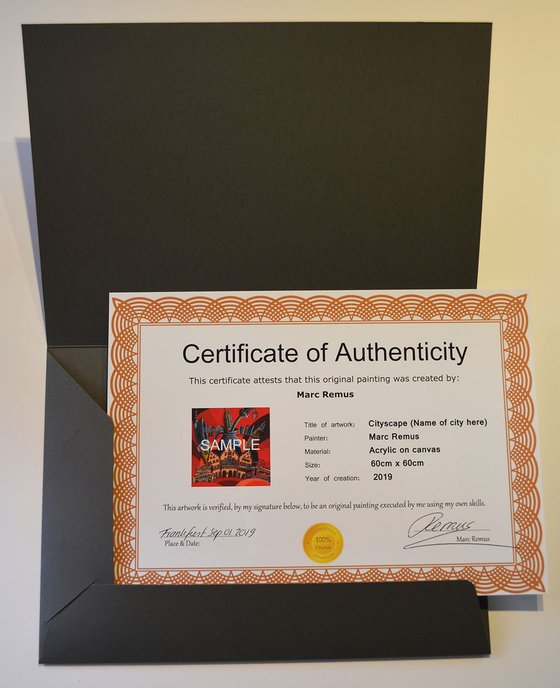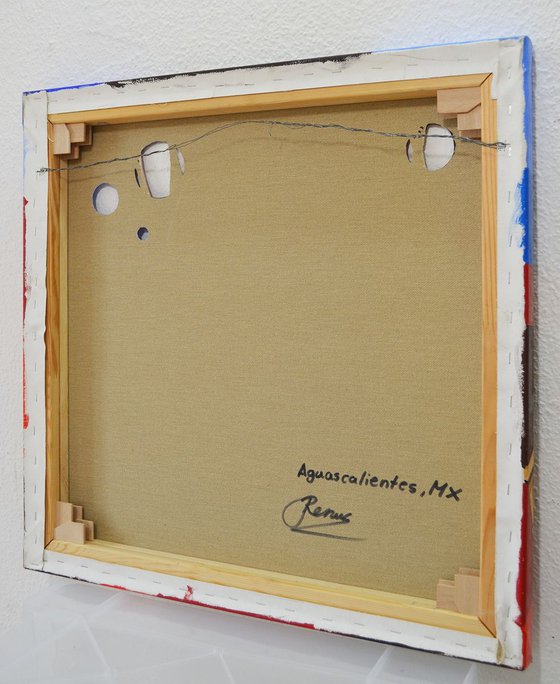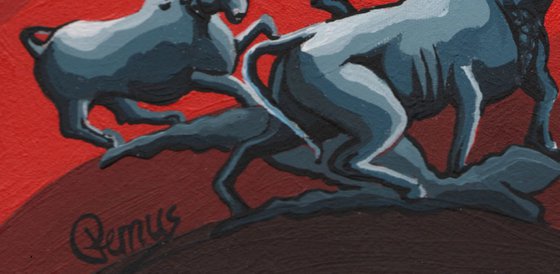- By medium
- By subject
- By budget
- Sales
- Gift cards
- Discover all art
- Artists
- Editors’ picks
- Ideas
Original artwork description:
Original artwork of the city of Aguascalientes, Mexico, painted on canvas and stretched on double wooden bars.
Even though I had only visited the city briefly over twenty years ago, one of the magazines of the town (Tibuame) published a long article about my work in 2015. For this publication I created this piece of art, celebrating the city of Aguascalientes. It became the cover of the magazine in 2015 (see pictures attached)
Detailed description of the painting:
The Day of the Dead is one of the most important holidays in Mexico. Skeletons are one of the many symbols of that day, especially the “Catrinas,” skeletons of ladies in fancy dresses. In 1854 the creator of these skeleton ladies, Jose Guadalupe Posada, was born in Aguascalientes and is the city’s most prominent son.
The statue of the street sweeper in the lower right hand corner of the painting is as much a tribute to Posada’s skeletons as the “Catrinas” that emerge from the holes on the top.
The holes that are actually cut into the canvas have a symbolic meaning. When the Spaniards first came to the region, they discovered that the entire area was undermined with tunnels that had been built by a native tribe. Even though the Spaniards never found out what the holes in the ground were used for, the city received the nickname “City of holes.”
On top of the bullfight arena of Aguascalientes are two roosters. For a long time, the cockfight was one of the most famous traditions of the town but in modern times it was forbidden due to animal cruelty.
Other landmarks like the cathedral, the Theater Morelos, and the governmental palace form the central part of the painting. Below the governmental palace we can see a reflection of a fort. The city was founded in an area that was settled by the Chichimeken tribe. The Spaniards built a fort to protect the city from the tribe. Later, the fort was destroyed, but the city started to spread around it. The reflection of the fort symbolizes the founding of this impressive city.
Materials used:
Acrylics on canvas
Tags:
#aguascalientes #cityscape #mexico #pintura #palace #cockfight #neo pop #mexico art #mexican day of the dead #catrinaAguascalientes Landmarks (Mexico) (2012) Acrylic painting
by Marc Remus
£1,180.03
- Acrylic painting on Canvas
- One of a kind artwork
- Size: 60 x 60 x 4cm
- Ready to hang
- Signed on the front
- Style: Urban and Pop
- Subject: Architecture and cityscapes
Loading
Original artwork description
Original artwork of the city of Aguascalientes, Mexico, painted on canvas and stretched on double wooden bars.
Even though I had only visited the city briefly over twenty years ago, one of the magazines of the town (Tibuame) published a long article about my work in 2015. For this publication I created this piece of art, celebrating the city of Aguascalientes. It became the cover of the magazine in 2015 (see pictures attached)
Detailed description of the painting:
The Day of the Dead is one of the most important holidays in Mexico. Skeletons are one of the many symbols of that day, especially the “Catrinas,” skeletons of ladies in fancy dresses. In 1854 the creator of these skeleton ladies, Jose Guadalupe Posada, was born in Aguascalientes and is the city’s most prominent son.
The statue of the street sweeper in the lower right hand corner of the painting is as much a tribute to Posada’s skeletons as the “Catrinas” that emerge from the holes on the top.
The holes that are actually cut into the canvas have a symbolic meaning. When the Spaniards first came to the region, they discovered that the entire area was undermined with tunnels that had been built by a native tribe. Even though the Spaniards never found out what the holes in the ground were used for, the city received the nickname “City of holes.”
On top of the bullfight arena of Aguascalientes are two roosters. For a long time, the cockfight was one of the most famous traditions of the town but in modern times it was forbidden due to animal cruelty.
Other landmarks like the cathedral, the Theater Morelos, and the governmental palace form the central part of the painting. Below the governmental palace we can see a reflection of a fort. The city was founded in an area that was settled by the Chichimeken tribe. The Spaniards built a fort to protect the city from the tribe. Later, the fort was destroyed, but the city started to spread around it. The reflection of the fort symbolizes the founding of this impressive city.
Materials used:
Acrylics on canvas
Tags:
#aguascalientes #cityscape #mexico #pintura #palace #cockfight #neo pop #mexico art #mexican day of the dead #catrina14 day money back guaranteeLearn more

